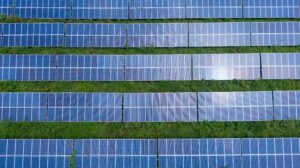
Solar energy is often touted as a promising solution for the world’s energy needs, particularly in the face of climate change and increasing energy demand. While solar energy is a promising source of renewable energy, it’s important to understand its efficiency and limitations.
To understand the efficiency of solar energy, it’s important to first understand how solar panels work. Solar panels are made up of photovoltaic (PV) cells, which are made from materials that can absorb sunlight and convert it into electricity. When sunlight hits a PV cell, it frees electrons, which create an electric current. This electric current can be used to power appliances, lights, and other electronics.
GET YOUR OWN SOLAR PANELS HERE
The efficiency of solar panels is measured by the percentage of sunlight that is converted into electricity. Most solar panels have an efficiency rating of between 15% and 20%, with some high-end models reaching efficiencies of up to 25%. This means that a certain percentage of the sunlight that hits the solar panel is converted into electricity, while the rest is lost as heat or reflection.
While a 15-20% efficiency rating may seem low, it’s important to keep in mind that solar energy is a clean and renewable energy source. In addition, solar panels can be installed on rooftops, in open fields, or in deserts, making it a flexible and scalable solution. The efficiency of solar panels has also been steadily increasing over the years, thanks to advancements in technology and manufacturing processes.
However, solar energy does have its limitations. One of the biggest limitations is that solar panels require sunlight to generate electricity. This means that they’re not effective at night or on cloudy days, and their efficiency can be reduced during the winter months. To address this limitation, solar panels can be combined with energy storage systems, such as batteries, to store excess energy generated during the day for use at night or on cloudy days.
Another limitation of solar energy is that it requires a significant amount of space. While solar panels can be installed on rooftops or in small areas, larger solar farms require a considerable amount of land. This can be a challenge in densely populated areas, where land is limited and expensive.
Finally, the manufacturing process for solar panels can also have environmental impacts. The production of solar panels requires the use of materials such as silicon, which is energy-intensive to produce. In addition, the disposal of solar panels at the end of their life cycle can also pose an environmental challenge.
In conclusion, solar energy is an efficient and promising solution for our energy needs, particularly as we seek to reduce our reliance on fossil fuels and address climate change. While it does have its limitations, including the requirement for sunlight and the need for space, solar energy remains a flexible and scalable solution that can be deployed in a variety of settings. As technology and manufacturing processes continue to improve, the efficiency and effectiveness of solar energy are likely to increase even further, making it an increasingly viable solution for our energy needs.